Clancy Tucker's Blog, page 139
September 30, 2018
1 October 2018 - MELISSA BOWERSOCK - GUEST AUTHOR
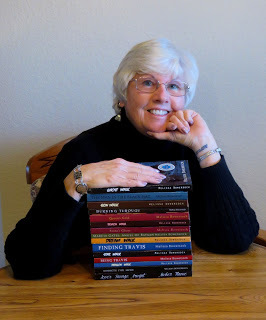
MELISSA BOWERSOCK - GUEST AUTHOR -
G'day folks,
Well, today I re-interview an author who has not stopped writing since our first interview some years back. Welcome, Melissa ...
1. TELL US A LITTLE ABOUT YOURSELF AND YOUR WRITING JOURNEY.
In my early 20s, I got rather frustrated with the books I was reading at the time (historical romances) and kept thinking, “I can do better than that.” So I did. My first two books were published by a New York house back in the 1980s when traditional publishers would still take a chance on an unknown if they thought the book would sell. There were several printings, and the books did reasonably well. Then the publishing industry began to tighten up, the NY house passed on my new books and my next three books were published by small presses that could take a chance without investing too much. In the meantime, my first two books went out of print and when I got the rights back, I wanted to keep them viable, so I began to investigate self-publishing. Once I figured that out, I have never looked back. I just published my 30th book, which still blows me away. The numbers certainly add up over the years.
2. WHEN AND HOW DID YOU BECOME A WRITER?
It might be easier to say I wasn’t a writer between the ages of 1 and 5. By 5 I was already writing stories about bunnies. Then I graduated to horses, and wrote my first novel when I was 12. Finally I began writing about people and have never stopped. I knew a long time ago that I just can’t NOT write.
3. WHAT TYPE OF PREPARATION DO YOU DO FOR A MANUSCRIPT? DO YOU PLAN EVERYTHING FIRST OR JUST SHOOT FROM THE HIP?
Actually very little. A kernel of an idea will start to grow in my head, and I might let it roll around for a few days, but then it’ll get very insistent and I’ll have to start writing it down. I generally block out about 5 basic plot points, then just start writing. I keep a story bible and update it as my characters evolve, and often update the bullet points of the story’s twists and turns. But it’s 95% just wading in and seeing where it goes. It very often does NOT go the way I think it’s going to!

4. WHAT DO YOU ENJOY MOST ABOUT BEING A WRITER?
I love the way the stories and characters evolve. I might start with a very basic idea and almost a blank slate for the characters, yet they fill themselves in as I go, and they develop their own personalities. It’s quite startling some times. I had one book where I had what I thought was a minor character, yet by the end of the book, he was very pivotal and absolutely stole the show. My characters and their stories often surprise me far more than I would ever expect. But that’s where the magic is. And I know if they surprise me, they’ll surprise my readers, too.
6. WHAT WERE YOU IN A PAST LIFE, BEFORE YOU BECAME A WRITER?
Well, now, there are two ways I could answer this. I am a certified hypnotherapist, specializing in past life regressions, and I have reviewed about 20 of my past lives. I’ve been a Native American, an Irishman, a painter, a Tibetan monk; lived in Africa, Arabia, Egypt, Greece, Iceland. Plenty of fodder there for future books. But in THIS life, before I was a writer (I’ll say full-time writer), my day jobs included 21 years with the phone company and 17 years with the National Observatory.
7. WHAT IS YOUR GREATEST WRITING ACHIEVEMENT?
Hmm, that’s a tough one. I love all my books, but one stands out, and that’s a biography of my aunt, who was an army nurse in WWII and a prisoner-of-war. She was captured by the Japanese on Corregidor Island in the Philippines. I actually did not want to write that book—I’m a novelist, not a biographer—but I knew her story needed to be told and if I didn’t tell it, no one would. So I wrote it. It was my best-selling book for many years, and the true story seemed to touch all manner of people in many ways. Yes, I definitely have to say that that is my greatest achievement.
8. WHAT ARE YOU WORKING ON AT THE MOMENT?
At the moment, I’m typing up Book 13 of my paranormal mystery series, the Lacey Fitzpatrick and Sam Firecloud Mystery Series. It’s about a female ex-cop teamed up with a Navajo medium to investigate murders by talking to the dead. When I started the series 18 months ago, I had no idea how many books I would write, but here I am on Book 13. So far the series has been very popular and I’m gratified that so many people are enjoying Sam and Lacey’s escapades. It’s a lot of fun.
10. WHAT GENRE DO YOU WRITE?
I write whatever good idea comes into my pointy little head, and worry about the genre later. I’ve done action/adventure, romance, fantasy, contemporary, western, spiritual, satire and biography. In the last few years, though, I’ve concentrated more on paranormal: ghosts, reincarnation, time travel, that sort of thing. I love any story with a bit of magic to it.
11. DO YOU HAVE ANY TIPS FOR NEW WRITERS?
Keep writing. And reading. Those two things more than anything else. I suggest writers don’t put arbitrary word counts or page counts or timelines on themselves, but just write when they can. Some days I’ll write 1500 words; some days I’ll write two paragraphs. It doesn’t matter. In the end, it gets done. And read. Read and notice what other writers do. Notice what works, what doesn’t. Write and read, and write and read some more.
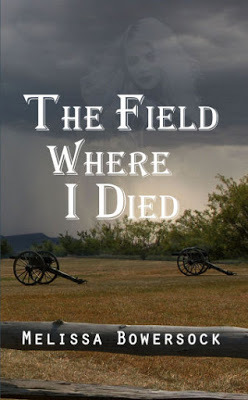
12. DO YOU SUFFER FROM WRITER’s BLOCK?
Eh, I never call it that. Some days I don’t feel like writing, so I don’t. Or life gets in the way. I never worry about it. I know it’ll come when it comes. I know some writers insist on writing so many words or for so many hours a day; I’ve never been that disciplined. Don’t plan to start now, either.
13. DO YOU HAVE A PREFERRED WRITING SCHEDULE?
I actually do. When I was working full time, it was anytime I could squeeze it in, but since I retired, I’ve worked out a good routine. I am high energy in the morning, so I do all my tasks that are goal-oriented, crossing things off my list. That might include errand-running, walking the dog, but also editing, marketing, research—all those non-creative writing chores. In the afternoon, when things are calmer, I can settle into writing with just let my mind go. That’s my full-on creative time, and I might crank out 1000 words in just two hours.
14. DO YOU HAVE A FAVOURITE WRITING PLACE?
I write longhand on legal pads, so I can actually write anywhere I want. My usual place is in my recliner in the family room, but I will often take my pad outside to the patio and write there. If need be, I take it with me to doctor’s appointments and write in the waiting room. One of the joys of pen and paper, and not having to fool with tiny little keyboards.
15. WHAT IS YOUR GREATEST JOY IN WRITING?
Holding that new book in my hands. Even with 30 books, that never gets old. It still amazes me that I can pour thoughts out of my head onto paper, type them up, convert them online and – voila! – I have a physical book I can hold in my hand. I think that will always be the greatest thrill.
16. WHO IS YOUR FAVOURITE AUTHOR AND WHY?
I don’t have favorite authors because most authors have better and not-so-good books, so I‘m not really loyal to a given author. My favorite books are A Prayer for Owen Meany by John Irving; The Mirror by Marlys Milhiser; Six of One by Rita Mae Brown and The Stand by Stephen King. Other books by those same authors don’t grab me as much, but those books I will re-read again and again.
17. WHAT’S YOUR OWN FAVORITE BOOK?
That’s a tough one, because I have so many. Out of my 30 books, I could easily say more than half are favorites. I re-read them periodically, and even the ones that I might not rate as high still surprise me when I revisit them. Superstition Gold, my second book and a historical romance, was my favorite for a long time. Then Queen’s Gold, a novel about reincarnation, took over that spot. Lately my time-travel novel, Finding Travis is very high on my list, as is The Man in the Black Hat, another time-travel. I love all the Sam and Lacey paranormal mystery books.
18. HOW LONG DOES IT TAKE YOU TO WRITE A BOOK?
It varies. The shortest amount of time was, I think, 23 days, and that was a Sam and Lacey book (which are short novels, averaging about 40k words). I find when I am really inspired and a book is burning a hole in my brain, I can set it down very quickly. Burning Through, another ghost story, was done in 30 days. With that one, every evening I would imagine where the next chapters were going, get it sorted out in my mind and then type it up the next morning; repeat the next day.
20. OTHER THAN WRITING, WHAT ELSE DO YOU LOVE?
I love photography and nature. Hiking rugged canyons, wading quiet creeks. I love the beautiful national parks of the US, particularly the Southwest. The Grand Canyon is in my back yard, and that feels like home to me.

21. DID YOU HAVE YOUR BOOKS PROFESSIONALLY EDITED BEFORE PUBLICATION?
I have never sought an outside editor. When I’m not in writing mode, I can easily slip into editing mode, and I seem to have a good eye for typos and holes in plots. I do, however, rely on the kindness of beta readers to read my books and alert me to any typos or questions they have about the story or the characters. They often bring a very different perspective to the story as seen through their own experiences, and that helps me to even out the story. I then revise as necessary, and I’m done.
24. WHAT WOULD YOU SAY IF YOU HAD THE CHANCE TO SPEAK TO WORLD LEADERS?
I wish all people could experience the benefit of seeing their past lives and understanding that reincarnation was real. I have a feeling that could change the way our world leaders think and act. I know when I began to review my past lives, it suddenly put everything into perspective; I knew intrinsically what was important and what was not. I was no longer afraid of death. If world leaders (and other influential people) could take a very long view on life instead of the short-sighted money-grubbing view they have now, I think the world would be a very different place. And a vastly better place.
26. WHAT ARE YOUR VIEWS ON BOOK TRAILERS? DO THEY SELL BOOKS?
Not that I have noticed. I do have some book trailers, and I don’t see a lot of traffic to them. The hard thing with books is that you never can track exactly where a sale came from, what triggered it and what sealed it. People may have seen a book trailer of mine weeks ago, thought it looked interesting, but didn’t buy the book. Then maybe I might have put out a new book and that reminded them, so then they went back and bought the first one, but how do you quantify that?
28. DOES THE PUBLISHING INDUSTRY FRUSTRATE YOU?
Not a bit. I self-publish, and I have total control. I write what I want, when I want, publish when I’m ready, and don’t answer to anyone. No one hangs over my shoulder. I accept all the credit and all the blame for my work, and I wouldn’t have it any other way.
30. WHAT WAS YOUR FAVOURITE MANUSCRIPT TO WRITE? WHY?
I think my favorite (at least right now) was Finding Travis, the time-travel story about a modern man who gets flung back to Arizona Territory in 1877. The background is that my husband and I live in a small town in Arizona that boasts the best-preserved Indian Wars-era fort in the state, Fort Verde. My husband and I occasionally volunteer there and dress in period clothing for events. During one such event, I began to think about what it was like back in the day, and before I knew it, the story was coming together. The great part was that the folks at the fort gave me full access to all areas of the grounds, the records, the history, photographs—anything I needed. I was extremely happy with the authenticity of my book, because I had all these resources, and I think it makes it a fuller experience for the reader. The funny part is that now, after completing the book, I often go to the fort and think, “Travis was here. Travis did this.” The real life fort informed the book, and for me, the book informs the fort. I like that.

31. HOW WOULD YOU DEFINE “SUCCESS” AS A WRITER.
There are so many aspects to this. The first one that comes to mind, of course, is the material one—popularity of books and making money with them. For me, that’s minor. I guess first and foremost, I have to like my work. I have to feel it’s good, it’s worthwhile, it’s satisfying. If not, what’s the point? But right on the heels of that, my readers have to like it, too. And the third thing, then, is the monetary success. I’ve often wondered how I’d feel if I wrote a book that I didn’t really like, but it became a best-seller. How would I feel? I don’t know. I just know I have to like the book first. I wrote a book last year that I thought was good, but something was missing from the main character. He just didn’t resonate for me. I put the book on a shelf for a year, finally puzzled out what was missing and went back and fixed it up. Now I’ve published it and I’m happy with it. This is The Field Where I Died, another reincarnation story.
32. WHAT SHOULD READERS WALK AWAY FROM YOUR BOOKS KNOWING? HOW SHOULD THEY FEEL?
I don’t really expect readers to feel anything specific. I hope they will enjoy my books, enjoy the experiences I take them on, but I hope, too, that they might learn something they never knew, entertain an idea or a concept they never considered before. I hope, too, that they will love my characters as much as I do. I had one reader tell me a while back that she was in love with Sam Firecloud, the male lead in my paranormal series. I told her I was, too! If my books can elicit feelings like that from my readers, I’m a happy camper.
33. WOULD YOU LIKE TO HAVE YOUR BOOKS MADE INTO MOVIES? EVER WRITTEN A SCREENPLAY?
I would love to see many of my books as movies, but the chances are slim. I do not write screenplays. I’m too wordy for that. My brother has written many screenplays, and I am familiar with the format, but it’s just too brief for me. I like to get into my characters’ heads, and the visual format of a screenplay makes that difficult.
34. HOW MUCH THOUGHT GOES INTO DESIGNING A BOOK COVER?
Quite a bit. Generally I will have an idea what I want when I start researching images, and often I will grab pictures off the web and cobble together a mock-up, which I then send to my cover designer, Brenda at coversbydesign.net. She’s great at refining my ideas, getting the legal aspects sorted out for buying licenses, etc., and of course does the full-res version for both paperbacks and eBooks. If I don’t have a clear idea for a cover, she can always come up with some suggestions for me. I think it’s been a trade-off in that sometimes we do what my original idea was, and sometimes we do something of hers, something I’d never thought about. For one book we might have many, many iterations, a lot of back and forth to try this, tweak that; at other times, we settle on an image, the font and—boom! We’re done. We have a great working relationship. I find this process to be a lot of fun.
36. WRITING IS ONE THING. WHAT ABOUT MARKETING YOU, YOUR BOOKS AND YOUR
BRAND? ANY THOUGHTS?
I’m afraid I’m not the best one to ask about this. Like so many authors, marketing is not my favorite thing. I do blast out new release info to my newsletter, my web page, my blog, all social media platforms that I use, but I don’t spend a ton of time or money on it. I have had very good luck with a company called bookdoggy.com when I have a new release or a 99 cent promo, and another company has brought terrific results for my paranormal series. It’s called Voracious Readers Only, and I have an ongoing deal that new readers who select for the genre mystery/thriller can request the first book of my series to read for free. In return, they agree to go on my newsletter mailing list, and they are politely requested to post a review of the book when they are done. I’ve gotten quite a few excellent reviews, plus the other books in my series are selling at a great pace. It’s definitely a win/win.
37. ARE YOUR BOOKS SELF-PUBLISHED?
Yup, every one.
38. DESCRIBE YOURSELF IN FIVE WORDS.
Hoo, boy. How about: creative, undisciplined, rebellious, trusting and changeable?
39. WHAT PISSES YOU OFF MOST?
Typos. We all have typos, we all make mistakes, but I constantly strive for a perfection I will probably never achieve. Even after a book is published, if I (or a reader) find one mistake, I will fix it immediately and republish. I can’t stand the little buggers.
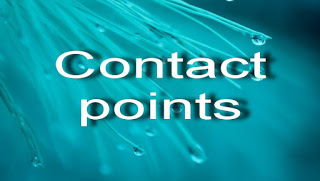
BLOG
WEBSITE

Clancy's comment: Go, Melissa! There is no stopping you. Well done, and great to see that you've been powering ahead.
I'm ...


Published on September 30, 2018 13:57
September 29, 2018
30 September 2018 - THE AFRICAN PENGUIN

THE AFRICAN PENGUIN
G'day folks,
The African penguin, also known as the jackass penguin and black-footed penguin, is a species of penguin, confined to southern African waters.
African PenguinClassification and Evolution
The African Penguinis a small to medium sized Penguin speciesthat is found along the coast of South Africaand on a number of its surrounding islands. The African Penguinis thought to be most closely related to the Humboldt and Magellanic Penguinsfound in southern South America, and the Galapagos Penguinfound in the Pacific Oceannear the Equator. The African Penguinwas named for the fact that it is the only speciesof Penguin that is found breeding on the African Coast, and it is believed to be one of the first Penguin speciesto be discovered by humans.

African Penguin Anatomy and Appearance
The African Penguinis a fairly distinctive speciesof penguin with clean black and white markings and a sharply pointed black beak. The African Penguin also has black feet and a number of dot-like markings flecked across its white chest which are said to be as unique to the individual Penguin as a Human finger print is, along with a narrow black band. The male African Penguin is generally slightly larger than their female counterparts but both are fairly similar in appearance. One of the African Penguin's most distinctive featuresis that they have pink glands above their eyes which help them to cope with the temperate climates. The hotter the African Penguin gets, the more blood is sent to these glands so it may be cooled by the surrounding air, which in turn, makes these glands more pink.
African PenguinDistribution and Habitat
The African Penguinis found on the south-western coast of Africa, living in 27 colonies on 24 islandsbetween Namibiaand Algoa Bay, near Port Elizabeth, South Africa, with the largest colonyfound on Dyer Island, near Kleinbaai. African Penguinsare most densely distributed around the cold, nutrient rich waters of the Benguela Current where there is a plentiful supply of food. Although they spend much of their time at sea, African Penguins gather in nesting sites on rocky islandswhere they spend their days in sheltered burrows to avoid the hot sun. They are one of the only Penguin speciesto be found in non-freezing conditions and cope with this by burrowing, emerging at dusk and dawn, and using the pink glands above their eyes to cool the blood down.

African Penguin Behaviour and Lifestyle
Like many other Penguin species, African Penguinsare incredibly sociable birds, with adults forming pair bonds that last for life (as long as 10 years). African Penguinscan often be seen grooming one another, which is not only practical for cleaning purposes, but also for removing parasitesand even just rearranging feathers, constantly strengthening the social bond between the pair. Their courtship displays are often very noisy as the male and female Penguincall to each other using a series of donkey-like sounds. African Penguins are also known to submit to a spot of bathing only a few meters from the shore, which they are thought to do quite regularly to both clean and to cool themselves down in the heat.
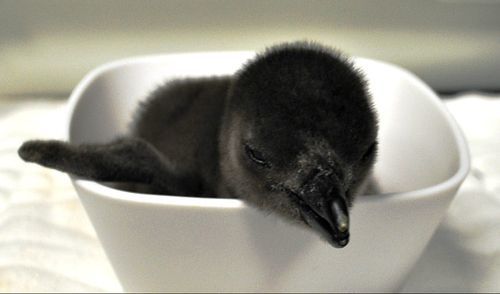
African Penguin Reproductionand Life Cycles
African Penguins begin to breed at the average age of four, when a male and female will pair up, and tend to breed together for the rest of their lives. The female African Penguin either digs herself a burrow or finds a dip beneath a rock or bush, in which she lays two eggs. The eggs are incubated by both parents for up to 40 days, when only one of the eggs will usually hatch. The African Penguin chicks are fed and kept warm by their parents constantly until they are a month old when they begin to be left on their own, forming crèches with other chicks for protection from predators. They tend to remain with their parents until they are between 3 and 5 months old, when they will leave the colony(this is dependant though on the supply and quality of food in the area). The chicks return to the colonyafter a couple of years to moultinto their adult plumage. African Penguinsgenerally live for between 10 and 15 years.

African Penguin Diet and Prey
The African Penguinis a carnivorous animal that, like all other Penguin species, survives on a diet that is only comprised of marine organisms. Shoaling fishincluding Anchovies, Sardines, HorseMackerel and Round Herrings make up the bulk of the African Penguin's diet, along with the occasional Squid or Crustacean when normal food is in short supply. The streamlined body of the African Penguinallows it to move through the water like a rocket, capable of reaching a top speedof around 20 kph when hunting for food. African Penguins catch their prey by diving into the oceandepths for around 2 minutes at a time. Although they normally go to depths of around 30 meters, it is not uncommon for them to be found hunting more than 100 meters beneath the water's surface.
African Penguin Predatorsand Threats
The African Penguin's smaller sizemeans that it has many predatorsboth in the water and also on dry land. Their marine predatorsare primarily Sharks and Cape Fur Seals, but the biggest threat to them on land is not just to the adult Penguins, but more the vulnerableeggs and chicks. Kelp Gulls and Scared Ibises prey on them from the air and Mongooses, Snakes, and Leopards have been observed hunting them on ground. The African Penguin has also been severely affected by Humanactivity in their native regions, with populations thought to have taken a drastic decline, mainly due to the exploitation of their eggs for food when they were first discovered. They are also severely affected by the disruption of their natural habitats.

African PenguinInteresting Facts and Features
Penguins have more feathers than any other bird, which act as a waterproof layer keeping their skin dry. African Penguins moultonce a year which they do back in their colonies. The whole process lasts for about 20 days, in which time, the African Penguins cannot swim or eat, and can lose almost half of their body weight. African Penguinsare known to spend long periods of time fishing out at sea, and depending on the area, can travel between 30 and 110 km in one trip. However, those African Penguins who have chicks to feed, will rarely go that far, catching food closer to the shore, and as quickly as possible. The African Penguin is also known as the Jackass penguin, due to the donkey-like call that they make during their courtship rituals.
African PenguinRelationship with Humans
It is widely believed that African Penguins were one of the first Penguin speciesto come into contact with Humans, due to the fact that they are found on the temperate South African coast rather than in the heart of Antarctica. This however, does not seem to have worked to the bird's advantage as their eggs were stolen for food (slowing the rate of reproduction), and the guano used in nest building was harvested for fertiliser. Today, other threats face the African Penguinincluding competition for food from commercial fishing and oil pollution in the water. Only a small handful of nesting sites can be accessed by tourists, but the Penguin's nervous nature of people means that these areas have to be strictly monitored.

African Penguin Conservation Statusand Life Today
Today, the African Penguinis considered to be a vulnerableanimaland has been listed as being Endangered by the IUCN. It is thought that today's African Penguinpopulation of around 70,000 breeding pairs, is less than 10% of the population that existed in 1900. By the 1950s, the African Penguinpopulation had halved, and it had then halved again by 1980. There is an approximate 2% decline in the African Penguinpopulation every year, mainly due to the Humanconsumption of their eggs, competition for food and habitatdisruption.

Clancy's comment: I had never heard of these creatures. Penguins in Africa? Wow!
I'm ...


Published on September 29, 2018 15:00
September 28, 2018
27 September 2018 - STAGHORN CORAL
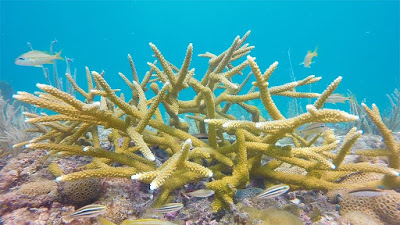
STAGHORN CORAL
G'day folks,
Reef-building Staghorn Corals are among the fastest growing corals on the reef; when healthy their branches can grow up to 8 in a year! They were once very abundant, but their population has declined by over 80% since the 1980’s, with no signs of recovery.
Quick FactsType: InvertebrateDiet: Nutrients from symbiotic algaeLifespan: >100 yearsSize: VariableWeight: UnknownHabitat: Coral reefsRange: Bahamas, Florida and the CaribbeanScientific name: Acropora cervicornis


Amazing Facts About the Staghorn Coral
Staghorn Corals are so named because their branches look like antlers. They some of the fastest growing corals and one of the most important in the Caribbean, having played a central role in the formation of the reefs over the last 5,000 years. They provide habitats for a diverse range of marine life and if in good conditions, can live for hundreds of years.
What are Staghorn Corals?
Staghorn Corals may look like plants or rocks, but they are actually animals. What we call ‘corals’ are made up of tiny animals named polyps. They can be as small as a pinhead or as long as a dart in diameter, and they group together to form large colonies. They then secrete a hard calcium carbonate shell, which gives them their ‘coral like’ appearance.
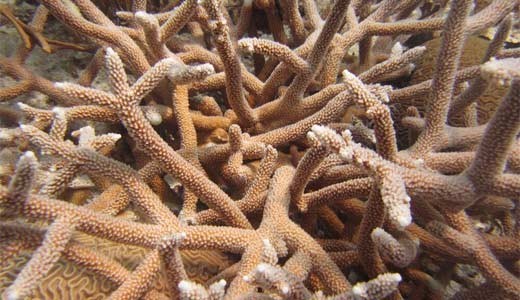
Where are Staghorn Corals found?
Staghorn Corals live on coral reefs throughout the Bahamas, Florida and the Caribbean. They inhabit clear waters and are typically found at a depth of 15–60 ft (4.5–18 m).
What do Staghorn Corals eat? Like many corals, Staghorn Corals have a symbiotic relationship with single-celled algae called zooxanthellae, which live in the polyp tissues. They produce nutrients through photosynthesis which they then pass to the corals. These nutrients are their primary food source, but Staghorn Corals also prey on microscopic animals known as zooplankton. Being static, they wait for prey to come to them and then catch them using stinging cells, known as nematocysts, present on their tentacles.


How do Staghorn Corals reproduce?
Staghorn Corals are hermaphrodites, so have both male and female reproductive organs; they reproduce in two ways: sexually and asexually.
Sexual reproduction occurs once a year in late summer, and it is quite the event to witness as eggs and sperm are mass released into the water column all at once. While each colony produces both sperm and eggs, they don’t self-fertilise, so sperm released from a different colony fertilises the eggs. The fertilised eggs then develop into larvae before settling and forming new colonies.
Asexual reproduction occurs when a broken ‘branch’ attaches to the substrate and begins to grow once more. As Staghorn Corals are quite fragile, this is the most common method of reproduction.
Are Staghorn Corals preyed upon? Staghorn Corals are fed on by nudibranchs and are also prey for butterflyfish, which target polyps as well as worms and other small invertebrates. It’s also not uncommon for certain species of fish, such as parrotfish, to bite off parts of the coral to reach prey hiding within.

What are the biggest threats to Staghorn Corals?
Staghorn Coral is listed as Critically Endangered on The IUCN Red List of Threatened Species.Climate change and the associated rise in sea temperature is the biggest threat to Staghorn Corals as changes in temperature can cause bleaching – when corals expel their zooxanthellae into the water column. This not only causes them to lose their primary nutrient source but also their colour as it is the zooxanthellae that are responsible for the beautiful colourings. Without them, they are white.
Staghorn Corals are vulnerable to extreme weather events, which are on the increase as a result of climate change, and are easily damaged by hurricanes. They are also susceptible to disease, which can spread quickly and kill off entire colonies, and at risk from ocean acidification, invasive species and direct contact with humans, mainly through the fishing industry and tourism.
What is the future for Staghorn Corals?
While overall numbers of this species are dropping, certain populations are holding steady. This provides hope that they can recover if we look after them.Many of the populations are living in protected habitats, and there are management plans in place in currently unprotected areas. Some organisations are also growing Staghorn Corals in nurseries before planting them in the wild.
While the future of Staghorn Corals is uncertain, possibly bleak, with time and dedication it may be possible to restore them to their former glory.

Clancy's comment: Amazing what happens beneath the oceans as we get on with our daily lives.
I'm ...


Published on September 28, 2018 14:56
September 27, 2018
28 September 2018 - CLEVER ART

CLEVER ART
G'day folks,
I'm always impressed by those who look outside the box. Check out these humorous pieces of art.


















Clancy's comment: Pretty clever, eh?
I'm ...


Published on September 27, 2018 14:02
September 26, 2018
29 September 20118 - OPRAH WINFREY
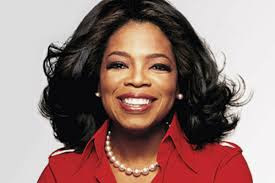
OPRAH WINFREY
G'day folks,
Oprah Winfrey (1954 – ) is an influential talk show host, author, philanthropist, actress and media personality. Oprah Winfrey has played a key role in modern American life, shaping cultural trends and promoting various liberal causes. Through her talk shows and books, she has focused on many issues facing American women. She has been an important role model for black American women, breaking down many invisible barriers.
Oprah Winfrey was born in Kosciusko, Mississippi. Her parents were unmarried and separated soon after conception. Oprah had a difficult childhood. She lived in great poverty and often had to dress in potato sacks for which she was mocked at school. She was also sexually abused at an early age.

From the age of 14, she went to live with her father. Oprah says he was strict, but she was in the mood to be disobedient during her teenage years. After working her way through college, she became interested in journalism and media and got her first job as a news anchor for a local TV station.
Her emotional style did not go down well for a news programme, so she was transferred to an ailing daytime chat programme. After Oprah had taken over, the daily chat show took off, and this later led to her own programme – The Oprah Winfrey Show.
The Oprah Winfrey show has proved to be one of the most successful and highly watched TV show of all time. It has broken many social and cultural barriers such as gay and lesbian issues. Oprah has also remained a powerful role model for women and black American women in particular. She is credited with promoting an intimate confessional form of media communication, which has been imitated across the globe.

In recent years, the Oprah Winfrey show has focused on issues of self-improvement, spirituality and self-help. Diet has also been a big issue with Oprah once successfully losing a lot of weight. Her subsequent diet book sold millions of copies.
Oprah Winfrey has promoted many spiritual books, which have focused on the aspect of taking responsibility for your life – not changing your circumstances, but changing the way you look at your life.
Oprah Wealth
Her range of media enterprises have made Oprah one of the richest self-made women. The Forbes’ international rich list has listed Winfrey as the world’s only black billionaire from 2004 to 2006 and as the first black woman billionaire in world history.In 2014 Winfrey has a net worth of more than 2.9 billion dollars.

Book Club
The Oprah Winfrey book club has become the most influential book clubs in the world. A recommendation from Oprah Winfrey frequently sends books to the top of the best-seller lists. Many commentators agree that Oprah Winfrey exerts enormous influence. Some estimated her support for Barack Obamahelped him gain one million votes in the 2008 election.
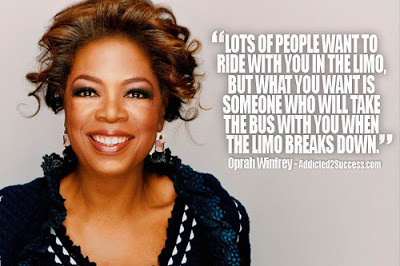
Acting career
Oprah Winfrey was also nominated for an Oscar in the film – A Color Purple. Produced by Steven Spielberg, the epic Color Purple told of segregation in America’s deep south. Oprah was widely admired for her role as Sofia.
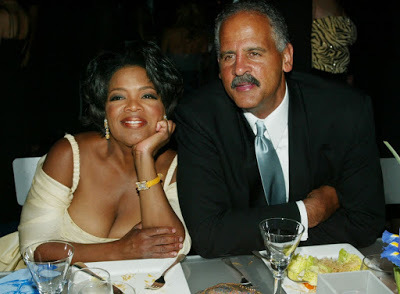
Support for Obama
From 2006 to 2008, she lent her support to the Presidential campaign of Barack Obama. Her influence and personal following played a key role in helping Obama to become the first African-American to become president.In 2013, Oprah gained a unique interview with the professional cyclist, Lance Armstrong. It was on Oprah that Armstrong finally made a dramatic confession that he had used performance-enhancing drugs during his cycling career.
Oprah Winfrey has been critical of the presidency of Donald Trump and on various occasions has hinted she would be interested in the possibility of running as a Democrat for president. However, she later clarified her view and says a presidential bid is unlikely.

Clancy's comment: Go, Oprah! What an extraordinary life, eh?
I'm ...


Published on September 26, 2018 13:32
September 25, 2018
26 September 2018 - COLONIAL EAST AFRICA IN THE 1920'S
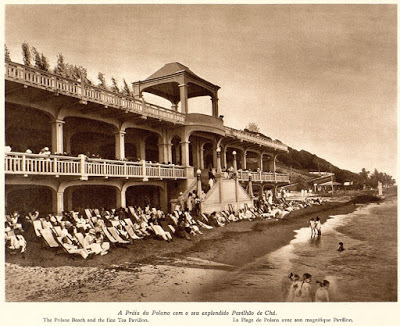
COLONIAL EAST AFRICA IN THE 1920'S
G'day folks,
Check out these shots of tourists in East Africa in the 1920's. Published in 1929, what strikes me most about the photographs is how they’ve really managed to make the East African colony of Mozambique just look like one giant country club for white folks– dressed in their own white linen uniform, replicating their luxurious lifestyles in foreign lands as if it were a god-given right.

















Clancy's comment: Mm ... Life must have been tough, eh?
I'm ...
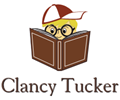

Published on September 25, 2018 13:24
September 24, 2018
25 September 2018 - PICTURES THAT MOVE
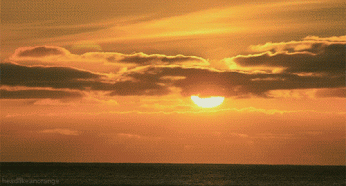
PICTURES THAT MOVE
G'day folks,
Yep, it's time to check out some pictures that move.
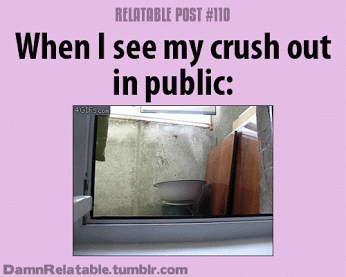



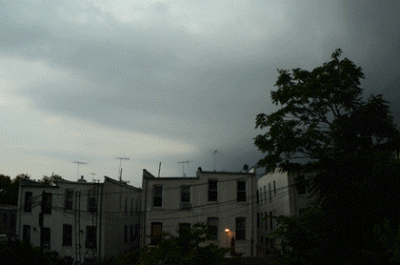
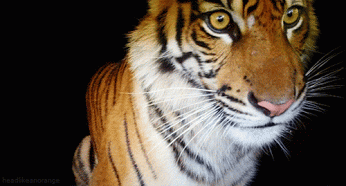

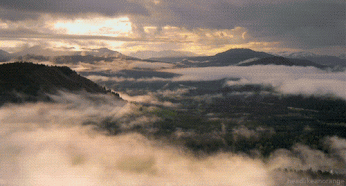

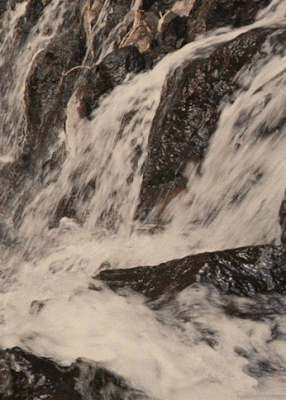
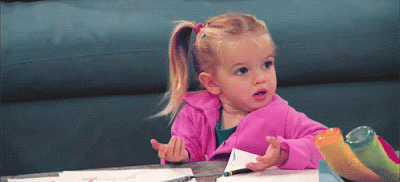
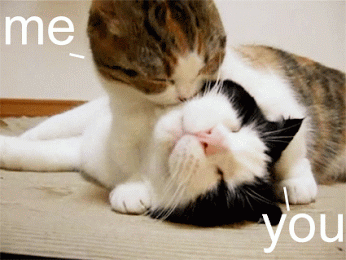


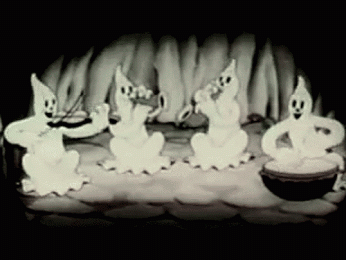

Clancy's comment: Love the kids.
I'm ...
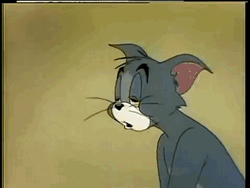

Published on September 24, 2018 13:27
September 23, 2018
24 September 2018 - KAREN S. COLE - GUEST GHOST WRITER

KAREN S. COLE- GUEST GHOST WRITER -
G'day folks,
This is my first interview with a ghost writer.
Welcome, Karen ...
1. TELL US A LITTLE ABOUT YOURSELF AND YOUR WRITING JOURNEY.
Well, I guess it mainly started when I was about ten. I wrote an assignment called “The Elephant in the Window” about how an elephant (to me, symbolizing the Republicans) was looking into people’s windows to see what they were doing inside their houses. It got an A+ and I began dreaming about becoming a fiction book author.
When I was fourteen, I stood in our basement reading my 2,000+-copy comic book collection. Turning some pages, I ran across Stan Lee, the Marvel Comics maven, and his infamous bullpen of writers. Having read Philip Roth’s related works, I began dreaming of becoming a book ghost writer myself. Envisioning my own company and founding a ghost writing services agency called Rainbow Writing, Inc.
I finally realized this dream in 2003, when I was 42 years old and had been freelance writing on and off over the years. In 2011, I rebranded and became Ghost Writer, Inc. which you can find under various keywords on Google. It’s entirely a business run by me through the friendly skies of the Internet, or the Wild Wild Web as I like to call it. Been at it now for fifteen years, with no plans to stop offering clients affordable ghost writing services.
2. WHEN AND HOW DID YOU BECOME A WRITER?
I’d say it was a part-time process at first. I wrote some in-house stuff for Starbucks, articles for various Internet agencies on a variety of subjects, and five books for Harlequin Romance during the 1980s. Had an article on the front page of Seattle Downtown News, wrote for the disabled community, did book reviews, and worked on a variety of freelance writing and editing jobs. I’ve always worked on prose or poetry, never done any screenplays. But members of our GWI team do scripts, music, tech writing and other stuff I don’t do.
All during my day job, I cared for disabled people as a home health care aide or nurse aide, from 1980 until 2001. For one year, I worked for Internet Advancement as an SEO specialist. But in January of 2003, I finally started Rainbow Writing, Inc. and really began ghost writing in earnest. My first truly ghost-written book was published in 2004 and 2005, and it sold over 20 copies per day from its book sales website.
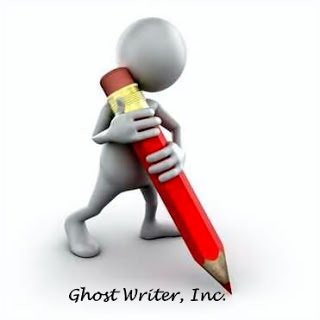
3. WHAT TYPE OF PREPARATION DO YOU DO FOR A MANUSCRIPT? DO YOU PLAN EVERYTHING FIRST OR JUST SHOOT FROM THE HIP?
Basically, I’m a hip shooter. I call ‘em like I see ‘em! Lately, I don’t work on incoming manuscripts for clients as much. I’m semi-retired, and I send work leads out to my team of 200+ ghosts, editors, marketers, illustrators and others. But when I do work on a book manuscript, first I ask the author client what type of writing, editing etc. it needs.
If starting from scratch, I create a book outline showing all the main points that the book will cover. Usually just a one-page document. And a book timeline, which Larry Leichman of The Floating Gallery told me about when I first started working with them. This document lays out all the important events in chronological order and lists when they occurred.
Another thing I’ve done for a lot of my author clients is telephone interviews. Where I ask them questions over the phone. Also, like this interview by you, Clancy, I do email questions and answers with them. I type everything into Word documents for editing and re-editing as I go along.
4. WHAT DO YOU ENJOY MOST ABOUT BEING A WRITER?
The technical work is easy. And the freedom is tremendous. As a freelance writer, I set my own time and payment schedules. As a book ghost writer running a ghost writing services agency, I work whenever I need to, and take off all the time in the world. This works great, I don’t need to report to a boss when I want to take a few days off with the family. As to the work, it’s a labour of love, work intensive when I’m doing it. But I just lay out a schedule and stick with it, to complete my work on time every time.
5. WHAT IS THE HARDEST THING ABOUT BEING A WRITER?
Sticking with the original author client’s voice can be difficult, if they really don’t have a voice. Some people just spurt out similar-sounding stuff, and it can be hard to detect exactly what their writer’s voice, style and reasoning sounds like their way. And some clients can be very picky about how they want their finished work to read.
Others will start a project and then quit part way through, stating they ran out of money or time. Sometimes people get sick and must quit a project. Once you’re involved, this can be hard on you. One of my clients had to quit because his sister-in-law interfered, saying she was going to sue him if he included his brother in his book.
But the hardest part of running a ghost writing services agency or company is getting work leads to come in. I constantly need to redo our business website to accommodate modern SEO (search engine optimization) practices. Right now, I’m getting ready to rewrite the site to greatly increase landing page conversions. To land more clients to send out to writers on our team, and better jobs for everyone including me.

6. WHAT WERE YOU IN A PAST LIFE, BEFORE YOU BECAME A WRITER?
Like I said before, my day job was nurse aide. Living in home doing personal care for physically and mentally challenged people. That all changed when I got remarried and began working steadily as a book ghost writer running ghost writing services, founding my own agency. As to any past metaphysical existences, I tend not to believe in that sort of thing. But if I was anyone else in a past life, I hope the karma was good enough for this time around.
7. WHAT IS YOUR GREATEST WRITING ACHIEVEMENT?
I’ve had several of my ghost-written books placed into the Library of Congress, including “The Boys of Birmingham” which was about the assassination investigation of Dr. King’s death. It was the first time the real story behind the investigation ever saw print. I’ve also ghosted a work about a ten-camp Holocaust survivor. And I’ve won several writing awards, including poetry awards through Poetry.com many years ago, before Lulu.com took it over. Such as Poetry Ambassador, and others.
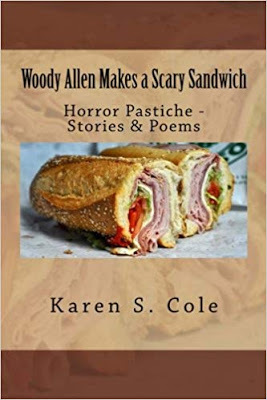
8. WHAT ARE YOU WORKING ON AT THE MOMENT?
Right now, I’m revising our business website to accommodate better website organization and to cause better client leads conversions. So, I’m not working on any book manuscript myself for the next few months. We are also moving out of the house we’ve been living in for the past ten years. This is taking up lots of my time. I could potentially take on a manuscript project, if things let up a little. But for now, I’m sending work on to our 200+ team of ghosts and others - and trying to take it easier this summer than before.
9. WHAT INSPIRES YOU?
When people treat me right, that’s the thing that inspires me the most. If a client is friendly, cooperative, polite and timely, it really helps me a lot. The same with all my writers. I’m a believer in the Golden Rule, do unto others as you would have them do unto you. Every day, I do my best to be professional in all regards, not lose my temper, excel in offering our services and otherwise run a smoothly efficient, operative business with a smile.
10. WHAT GENRE DO YOU WRITE?I will write in any genre. Over the years, I’ve written in most of them, everything but technical writing. That type of writing is way too specialized to just pick up on it without lots of prior experience and training. But I’ve found over time that memoirs tend to be my specialty. I’ve simply had more requests for life story writing and creating memoir work for our author clients. Other than that, fiction-wise I tend to enjoy writing science fiction.

11. DO YOU HAVE ANY TIPS FOR NEW WRITERS?
Nothing but the usual ones: write, write and write some more! And read even more than you write. Keep a daily journal and write down all your drifting thoughts and insane ideas. Especially the ones for new books and articles you could write. Finally, if you don’t have a degree or certificate in some form of writing, get one. It really helps you to land more jobs. Get published, list your services on Guru.com, Freelancers and other places online. Take work for low prices at first, as you build your experience charge more.
12. WHAT’S THE GREATEST COMPLIMENT YOU EVER RECEIVED FROM A READER?
The types of compliments I tend to get are, “You’re so timely,” or about how I respond quickly to emails and requests. And compliments on how well I stick to the original voice of an author client. Also, I get praised about how well Ghost Writer, Inc. delivers on our promises of good work at great pricing. We have several five-star Google Reviews attesting to this. Compliments about our writers reflect well upon Ghost Writer, Inc. as a ghost writing services company, every time an author client is grateful for our services.
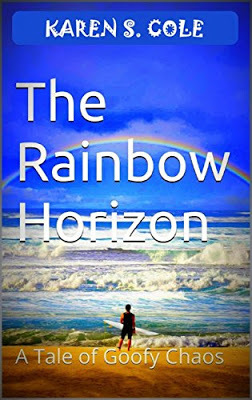
13. WHAT WAS THE WORST COMMENT FROM A READER?
I remember something years back about how “I can get work at less than half this price (it was already quite low) in China and India, yadayada…” And sometimes a potential client will say they can get it done by a “kid down the street” or their “best friend” and they don’t need our editing. This is after they’ve contacted us.
All these people have been hugely rude, nasty and impolite. One of them seemed about to hire us for decent money, then they said, “I got a guy who knows people at Marvel Comics, goodbye!” I don’t like “problem” clients who mistreat me and our other writers, they can be a real pain.
It’s hard to tell in advance which ones are going to turn out to be that way. Every time, I do my best to screen out the weirdos and wackos. But some of them come on as normal at first. Then they become a nightmare. One thing: after all these years, GWI has never been sued. Not even once! We always offer great service at affordable pricing and fulfil our clients legally in every way. So, nobody has had any valid complaints yet.
14. OTHER THAN WRITING, WHAT ELSE DO YOU LOVE?
Going for long drives to enjoy the gorgeous Pacific Northwest scenery. And to take walks in our local parks, down trails by the water. This is great during the summer months especially. In the winter, I love nothing more than being contented to read wonderful books of all types and varieties. I keep on the lookout for new books that I’m likely to get a big kick out of. Books that challenge my mind, and books about “Star Trek” and other subjects near and dear to me that are more fun than challenging.
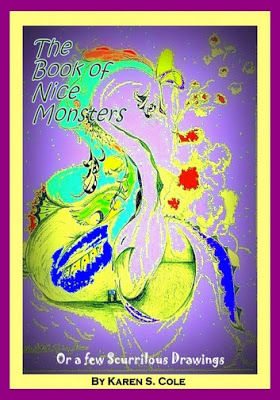
15. WHAT ARE YOUR PLANS FOR THE FUTURE?
I am going to continue running Ghost Writer, Inc. and handling incoming ghost writing related leads, including marketing, promotions, sales, publishing assistance and other such business. Hopefully until I’m ready to fully retire, which should be around 2028 or so. Or later. If I want to or must, I’ll work until I’m 90 or 100, if I’m around that long. It’s fun!

You can find our ghost writing services company or agency at https://rainbowriting.comor by Googling Ghost Writer, Inc. Be careful on the spelling, there are other companies like us out there. But none of them offer you the bestselling authors and ghost writers we have at GWI. For the most affordable ghost writing prices, rates and fees on the open market. Email me at karen@rainbowriting.com(remember, there’s only one “w” in rainbowriting) and call me at 425.205.9707 West Coast Time, Seattle area.
Our blog website is located at https://ghost-writer-book.comand is loaded with blogs about the business and nature of ghost writing and editing. You can find a list of my short stories at https://ghostwriterwriting.comalso. As to books, three are currently published under my own name. You can get print versions on Amazon under author name Karen S. Cole. But here are free ebook versions you can download to check out the quality of my own writing:
https://www.smashwords.com/books/view/508208 - The Rainbow Horizon: A Tale of Goofy Chaos. This is probably the world’s very first multicultural humor novel. It’s set in the Pacific NW and is a rollicking romp of a good time.https://www.smashwords.com/books/view/532281 - Woody Allen Makes a Nice Sandwich: Horror Pastiche, Stories & Poems. This is a tribute to a great man and artist, whom I still am loyal to in spite of the scandals about him. The book is a collection of short stories, not mainly about Woody, though.https://www.smashwords.com/books/view/624955 – The Book of Nice Monsters: A few Scurrilous Drawings. This book shows my side as a Native American artist, and it’s inspired largely by the works of Dr. Seuss.

Clancy's comment: Well done, Karen. Thank you. I hope you live to a long and successful age.
I'm ...


Published on September 23, 2018 14:22
September 22, 2018
23 September 2018 - STUNNING PHOTOGRAPHY
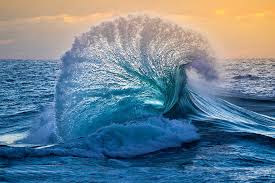
STUNNING PHOTOGRAPHY
G'day folks,
As a photographer, I'm always impressed by photography taken by others. Check out these fabulous samples.


















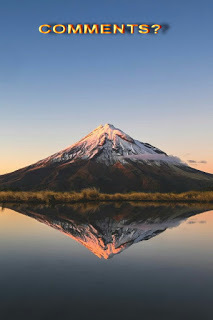
Clancy's comment: Awesome stuff, eh?
I'm ...


Published on September 22, 2018 16:44
September 21, 2018
22 September 2018 - EVER PLAYED MOTOR BALL?
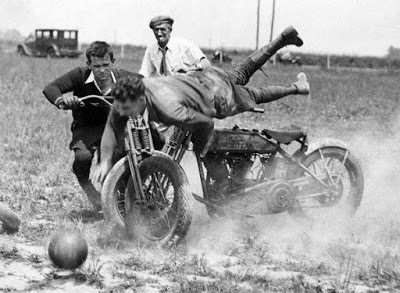
EVER PLAYED MOTOR BALL?
G'day folks,
We've just had the World Cup, but here's something similar that used to be very popular.
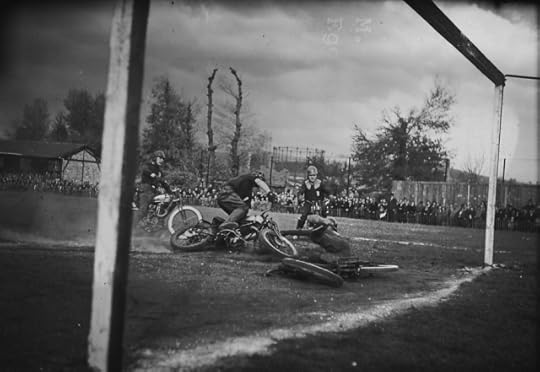
N ot to rag on the World Cup or anything, but why run after a football when you can just drive towards it on a motorbike? Well that’s the spirit of Motor-ball, which is pretty much exactly what it sounds like. All you need to play is 1) a huge inflatable ball, 2) a bike of some kind, and 3) the need for speed… and maybe 4) a death wish.

The jury’s out on how it started. Some trace it to 1930s France, where they call it Moto-ball others say it was started by the Worcester Motor-ball Club in 1934. Regardless, at its peak in the mid-century there were teams all across Europe and even Russia. The sport’s still out there today, but remains rather niche.

“You can dribble or kick with either foot, but you’ve got to keep your eyes peeled,” reported British Pathé at a British game in 1964, “The veterans [have] 250cc racing bikes,” and each team has two players on stand-bye because, well, getting punted in the face is not uncommon (hence the helmets). You can also spot a Motor-Baller by his or her knee-high boots, which protect from chaffing and high-speed contact as they try to nestle the 40 cm wide ball in front of their foot.





Clancy's comment: I'd sure give it a go. Would you?
I'm ...


Published on September 21, 2018 13:29



